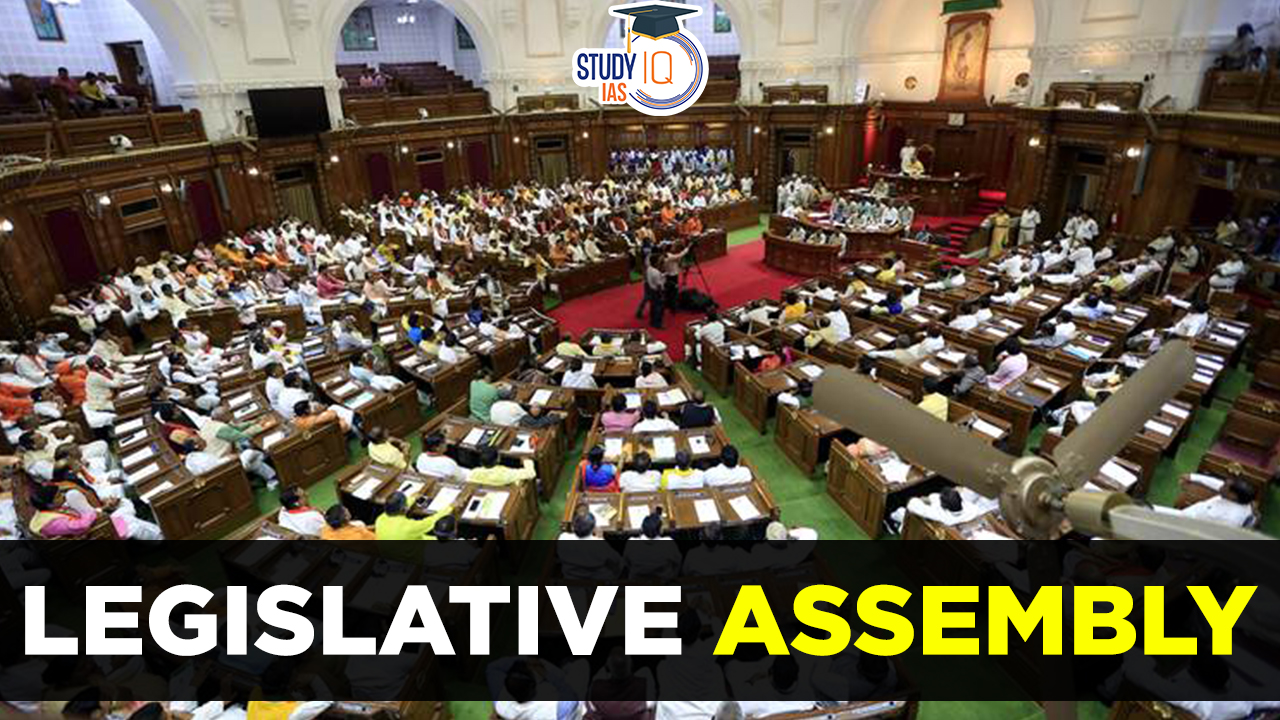Table of Contents
Context: The opposition in Chhattisgarh has filed a writ petition in the Chhattisgarh High Court challenging the expanded size of the Cabinet of the Legislative Assembly.
Legislative Assembly
One of the components of the public authority is the Legislative Assembly. It has the authority to enact laws for a country or a state. Regulations are the rules created by the assembly. There are a number of common titles for the legislative body that vary from country to country, including assembly, congress, diet, houses, parliament, duma, etc. Different assemblies play different roles.
However, they are entirely framed by the portrayal of people, which is typically done through the general adult establishment. The Legislative Assembly is an important part of Indian Polity, which is an important subject in the UPSC Syllabus. Students can also go for the UPSC Mock Test to get more accuracy in their preparations.
The popular House of a State is called the Legislative Assembly. The Chief Presiding Officer of a State’s Legislative Assembly is the Speaker. He is chosen by the Assembly members voting among themselves. When the Speaker is not present or when the Speaker’s position is vacant, the Deputy Speaker preside.
However, when both the Speaker and Deputy Speaker positions are vacant, the Governor may appoint members of the assembly to fill the vacant positions. Members of the Legislative Assembly are chosen directly by the people from territorial constituencies in the State in accordance with the universal adult franchise principle.
Composition of Legislative Assembly
The State Assembly may not have fewer than 60 or more than 500 total members of the Legislative Assembly. For small states, the centre has set a lower number of members. According to the population, a State seat in the Legislative Assembly is set aside for members of the Scheduled Castes and the Scheduled Tribes.
Members of the Legislative Assembly
The State Legislative Assembly might have as few as 60 and as many as 500 representatives. Goa, Arunachal Pradesh, and Sikkim are the only states that are exempt from this rule and are allowed to have relatively smaller Assemblies. However, the population-to-state legislature seat ratio ought to be roughly the same in every state.
Duration of Legislative Assembly
Every State’s Legislative Assembly has a five-year term that can be dissolved earlier by the Governor. The Legislative Assembly of States now has a six-year tenure, up from the previous five years, per the 42nd Amendment Act of the Constitution of 1976. The State Legislative Assemblies’ five-year terms were reinstated by the 44th Amendment Act of 1978.
The life of the Assembly during the national emergency may be prolonged by an act of parliament for a maximum of one year at a time, but in no instance for more than six months after the proclamation has ceased to be in effect.
State Legislative Assembly
The state legislative assembly is another name for the Vidhan Sabha, the lower house of the state legislature. Its members are elected by the general public and have a five-year tenure. Legislative systems come in two varieties: unicameral and bicameral. In the latter, two houses are present and share power in creating laws at the federal and state levels, as opposed to the former, where only one house is allowed to create and carry out laws at the federal and state levels. India is an illustration of a country with a bicameral legislature. Six of the 28 states listed here have both a legislative council and a state legislative assembly, as do all the union territories.
In India, 6 states have a bicameral legislature — meaning they have both a Legislative Assembly (Vidhan Sabha) and a Legislative Council (Vidhan Parishad).
These states are:
-
Andhra Pradesh
-
Bihar
-
Karnataka
-
Maharashtra
-
Telangana
-
Uttar Pradesh
👉 All other states and Union Territories have unicameral legislatures (only a Legislative Assembly).
Qualifications of Legislative Assembly Members
They must be Indian citizens, be at least 25 years old for the Legislative Assembly and 30 years old for the Legislative Council, and meet the requirements set forth by the Parliament.
Size of Cabinet of Legislative Assembly
Constitutional Provision
- Article 164(1A): Provides that the total number of Ministers, including the Chief Minister, in the Council of Ministers of a State shall not exceed 15% of the total strength of the Legislative Assembly of that State.
- However, the number of Ministers, including the Chief Minister, shall not be less than 12.
- This provision was inserted by the 91st Constitutional Amendment Act, 2003.
- Objective: To prevent jumbo-sized ministries and curb the practice of accommodating legislators in the Council of Ministers for political considerations (known as office of profit or political patronage).
| Similar Provision in Centre |
|


 SLAPP Suits: Meaning, Examples, Impact o...
SLAPP Suits: Meaning, Examples, Impact o...
 Finance Commission of India, Articles an...
Finance Commission of India, Articles an...
 High Number of Pending Cases in Supreme ...
High Number of Pending Cases in Supreme ...

























